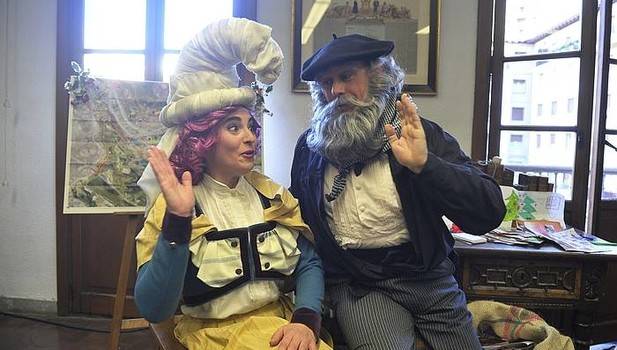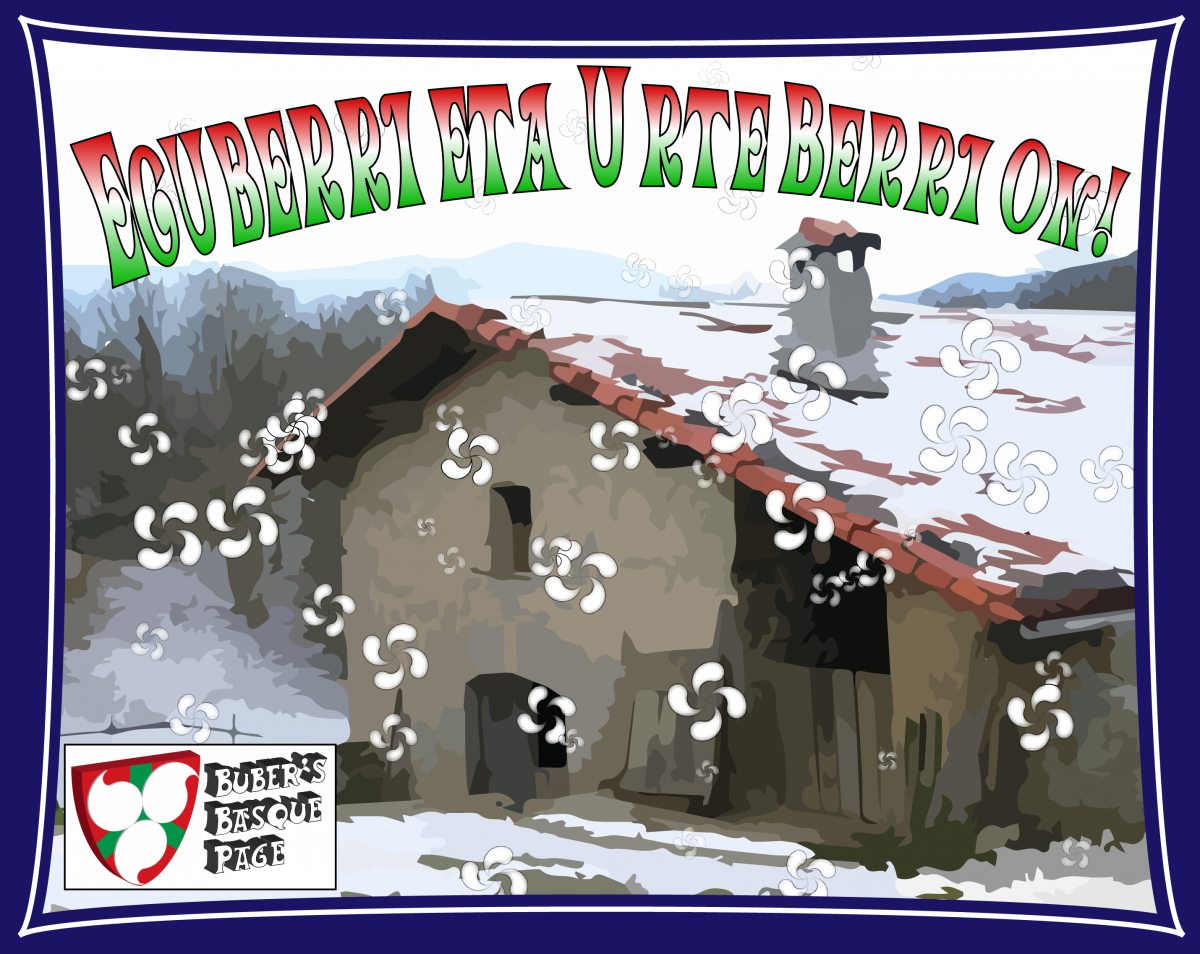In almost any Basque-themed celebration of Christmas, instead of Santa Claus, a very distinct figure appears, wearing not a bright red suit trimmed in white but rather a more mundane outfit, often a blue or black shirt with blue pants topped off with a black beret. In modern times, he is portrayed as a joyful peasant that loves to eat and drink, and brings presents to kids. But he has a more complicated and darker past.

- One story related to Olentzero is that a group of people, possibly pagans, were dancing in the meadow of Matxabaleta, in Aralar, when they spied a dark cloud on the horizon. Frightened, they rushed to consult with the eldest of their elders, who foresaw that the cloud presaged the coming of Kixmi, of Christ. He exclaimed “Sortu dek Kixmi, Galduak gaituk. Jauzi mallotik bera! [Kixmi has been born, we are lost. Throw me from the cliff!]” After he was killed, the cloud came and the others started dying one by one, except for one, Olentzero, who rushed to the village to announce the coming of Kixmi. In some tellings, the race of people that were killed by the cloud were the jentils, the giants of Basque folklore.
- Thus, the story of Olentzero can be taken two ways. He announces the coming of Christ, and is a herald of the new religion. On the other hand, he is the last survivor of the way of life from before, the end of the old culture.
- In pre-Christian times, it seems that the figure of Olentzero (also called Olentzaro, Orentzaro, Orantzaro) symbolized the end of the winter solstice, or the annual cycle. In the 17th century, some people called Christmas Eve “Onenzaro,” which has been interpreted to mean “the season of the good ones.”
- The actual figure of Olentzero takes many forms: In Oiartzun he is a coal worker who lives with his wife; in Zarautz, he has red, bloody eyes; in Elduaien, his face is black, smudged with coal; in Larraun, he has as many eyes as the days of the year, plus one; in Berástegi, he appears loaded with a bunch of branches and with a sickle in his hand.
- Olentzero has a relationship to wood and to fire. In many places, a special wood, much like a Yule log, is burnt on Christmas Eve that is called, amongst other things, Olentzero-enbor and Onontzaro-mokor. In parts of Araba, bonfires are lit on New Year’s Eve and a wine skin, representing the year that is ending, is burnt.
- The Christmas Eve log has many special properties. In some places, they had all domestic animals pass over it, to protect them from any accident. In others, they burned the log and fire in the fireplace very brightly, to prevent Olentzero from coming down the chimney and killing everyone with his sickle. In yet others, the log was brought into the house whenever a thunder storm approached to help ward it off. If the log goes out during the night, a member of the family will die in the coming year.
- Olentzero was somewhat forgotten in the aftermath of the Spanish Civil War, but he was revived, albeit in a new form, starting in the 1950s, when he was conflated with the idea of Santa Claus. Now, he brought gifts to children, appropriating some of the customs that were previously attributed to the Magi. Today, he is an ubiquitous presence during Christmas time in Basque communities around the world.
- Zorionak eta Eguberri On! Merry Christmas from Buber’s Basque Page!

Primary sources: Barandiaran Ayerbe, José Miguel de [et al.]. Olentzero. Enciclopedia Auñamendi, 2019. Available at: http://aunamendi.eusko-ikaskuntza.eus/es/olentzero/ar-101916/; Wikipedia.



2 thoughts on “Basque Fact of the Week: Olentzero, the Basque Santa Claus”